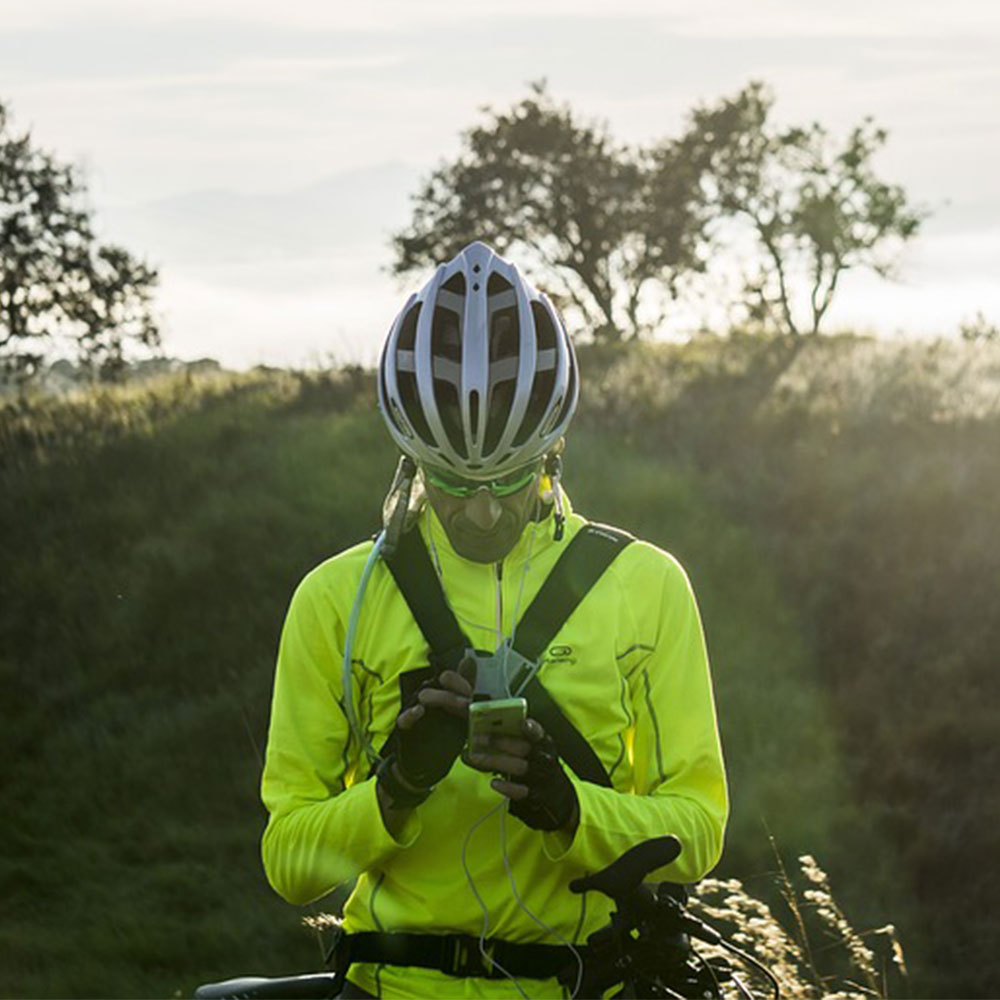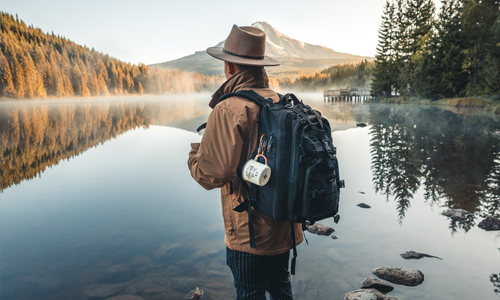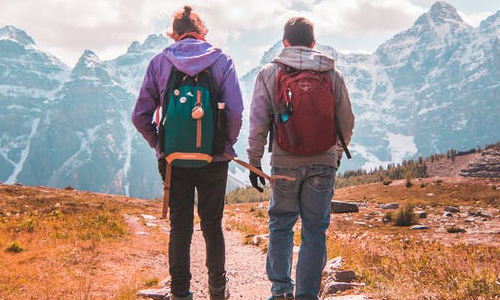Why Reducing Your Backpack’s Weight Is Not Difficult?
Author

Chris shares his passion for cycling, hiking, skiing, and climbing from Buxton, in the Peak District. As a blogger for Outdoor Look, Chris shares outdoor tips and indoor tricks to help you get the most out of your time spent outside. When he's not out adventuring he's making videos or trying to keep up with his 4-year-old son.
At some point during our long hiking trip, we all have ended up wishing for a lighter backpack. However, most of us also feel that everything we carry on our trips is absolutely necessary and we can’t afford to leave any item. Often, this mindset keeps us from analysing our backpack for reducing its weight. Well, don’t worry as we’ve done the hard work for you.
Read on to find out why reducing your backpack’s weight is not as difficult as you think.
Find the Extras and Leave Them Behind
If you have seen the old videos or pictures of backpackers in the 70s-80s then you might have noticed the light and small backpacks. Do not assume that this was by chance as those hikers were well aware of the essentials they needed.  Although it takes time for a hiker to figure out if you give your backpack a closer look you will realise that the things which do not fall in the following list might be the EXCESS we are talking about.
Although it takes time for a hiker to figure out if you give your backpack a closer look you will realise that the things which do not fall in the following list might be the EXCESS we are talking about.
Here are the Main Necessities:
Map and Compass, sun safety gear (shades, hat, and sunscreen), insulation (rain tools, down jacket, sleeping bag, gloves, and hat), headlamps with spare batteries, lighter, small first aid kit, multi-tool kit and knife, food and hydration, shelter.
NOW, we will analyse this group of main necessities and try to eliminate the kinds of stuff which are not required. For example, we can reduce the weight of water we carry if our trail has water sources available every few miles. We can spend a few more bucks to buy a lighter version of jackets, sleeping bag and items of clothing which provide the same protection with a significant reduction of weight in the backpack. We need not have an extra pair of clothing and try to have only 2-3 pairs which will be enough for 5-7 days trip.  The idea is not going for things that increase your discomfort at the cost of style and fashion. Carrying a small set of toiletries like toothpaste, sunscreen, mosquito repellent will also reduce the weight as carrying them in excess is of no use for smaller trips. You can also try reducing the weight of your tent, backpack and sleeping system. These objects are generally the heaviest and carrying a lighter version of them will be of great help in keeping the load at a lower level.
The idea is not going for things that increase your discomfort at the cost of style and fashion. Carrying a small set of toiletries like toothpaste, sunscreen, mosquito repellent will also reduce the weight as carrying them in excess is of no use for smaller trips. You can also try reducing the weight of your tent, backpack and sleeping system. These objects are generally the heaviest and carrying a lighter version of them will be of great help in keeping the load at a lower level.
Understand the Place You’re Hiking To
Understanding the place you re hiking to simply means that you need to be aware of the local weather, terrain and the local flora and fauna. For example, during summer you don’t need to carry heavy insulated clothes. If the local terrain has enough vegetation and local wild fruits are available, you can save some weight on your food as you can binge on those fruits and veggies. As mentioned before, you can also save some weight on water if the place has ample sources of water. Depending upon your terrain and local weather you can also reduce the weights on your protective gears. Knowing the place always helps you pick the right set of essentials.
So, we analysed and figured out exactly what we need in the previous sections. We also understood how segregating the essentials according to the type of place plays a major role in reducing the weight of the backpack. Follow these tips and optimise the weight of your backpack to have the most comfortable hiking trip.
Author

Chris shares his passion for cycling, hiking, skiing, and climbing from Buxton, in the Peak District. As a blogger for Outdoor Look, Chris shares outdoor tips and indoor tricks to help you get the most out of your time spent outside. When he's not out adventuring he's making videos or trying to keep up with his 4-year-old son.
- Speed Up Your Post-Hike Recovery with These 6 Essential Tips
- Cycling through Tranquil Roads and Coastal Views on the Isle of Wight
- The Essential Guide to Hiking Safety: 5 Tips Every Hiker Should Know
- Run Smart, Run Strong: Your Guide to Injury-Free Running
- Embrace Biking: Essential Tips for Beginners
Categories
- Sport (28)
- Product Reviews (3)
- Team Outdoor Look (7)
- Mike Wild (2)
- Mike Payton (2)
- Suse Hammond-Pears (3)
- Snowboarding (12)
- Latest Offers (105)
- Shop Talk (1)
- Competitions (7)
- Walking (413)
- Lifestyle Fashion (8)
- Travel (86)
- Kit Guides (176)
- Workwear Clothing (6)
- Safety Workwear (4)
- Health/Fitness (289)
- Skiing (91)
- Great Outdoors (1316)
- Cycling (92)
- January 2025
- December 2024
- November 2024
- October 2024
- September 2024
- August 2024
- July 2024
- June 2024
- May 2024
- April 2024
- March 2024
- February 2024
- January 2024
- December 2023
- November 2023
- October 2023
- September 2023
- August 2023
- July 2023
- June 2023
- May 2023
- April 2023
- March 2023
- February 2023
- January 2023
- December 2022
- November 2022
- October 2022
- September 2022
- August 2022
- July 2022
- June 2022
- May 2022
- April 2022
- March 2022
- February 2022
- January 2022
- December 2021
- November 2021
- October 2021
- September 2021
- August 2021
- July 2021
- June 2021
- May 2021
- April 2021
- March 2021
- February 2021
- January 2021
- December 2020
- November 2020
- October 2020
- September 2020
- August 2020
- July 2020
- June 2020
- May 2020
- April 2020
- March 2020
- February 2020
- January 2020
- December 2019
- November 2019
- October 2019
- September 2019
- August 2019
- July 2019
- June 2019
- May 2019
- April 2019
- March 2019
- February 2019
- January 2019
- December 2018
- November 2018
- October 2018
- September 2018
- August 2018
- July 2018
- June 2018
- May 2018
- April 2018
- March 2018
- February 2018
- January 2018
- December 2017
- November 2017
- October 2017
- September 2017
- August 2017
- July 2017
- June 2017
- May 2017
- April 2017
- March 2017
- February 2017
- January 2017
- December 2016
- November 2016
- October 2016
- September 2016
- August 2016
- July 2016
- June 2016
- May 2016
- April 2016
- March 2016
- February 2016
- January 2016
- December 2015
- November 2015
- October 2015
- September 2015
- August 2015
- July 2015
- June 2015
- May 2015
- April 2015
- March 2015
- February 2015
- January 2015
- December 2014
- November 2014
- October 2014
- September 2014
- August 2014
- July 2014
- June 2014
- May 2014
- April 2014
- March 2014
- February 2014
- January 2014
- December 2013
- November 2013
- October 2013
- September 2013
- August 2013
- July 2013
- June 2013
- May 2013
- April 2013
- March 2013
- February 2013
- January 2013
- December 2012
- November 2012
- October 2012
- September 2012
- August 2012
- July 2012
- June 2012
- May 2012
- April 2012
- March 2012
- February 2012
- January 2012
- December 2011
- November 2011
- October 2011
- September 2011
- August 2011
- May 2010
- April 2010
- March 2010
- February 2010
- January 2010
- November 2009
- October 2009
- September 2009
Submit a Comment